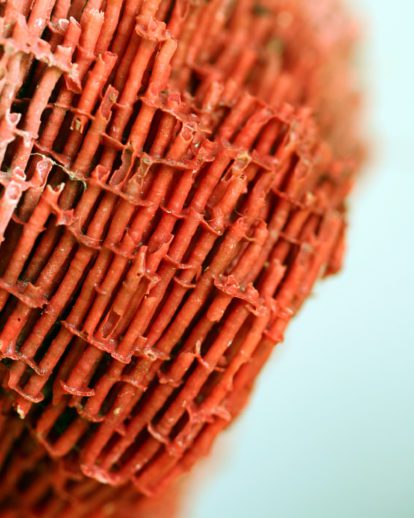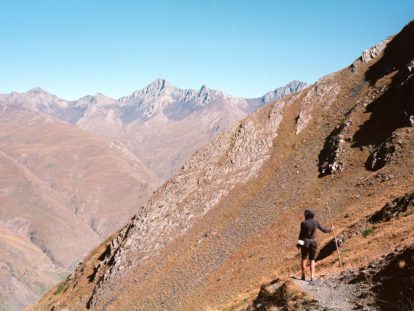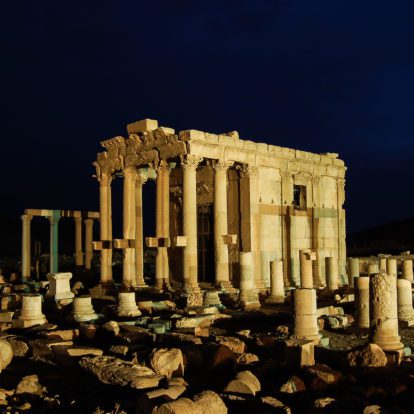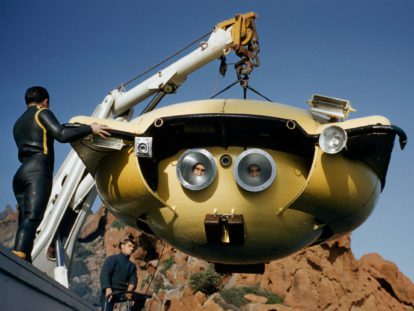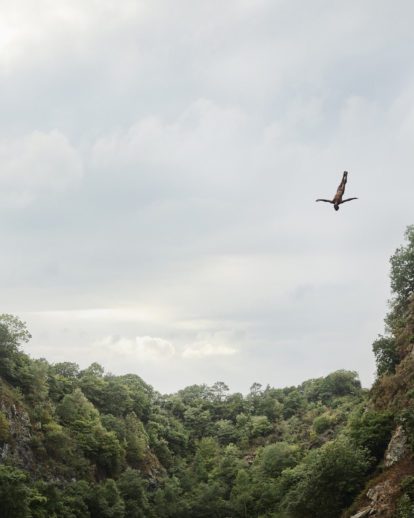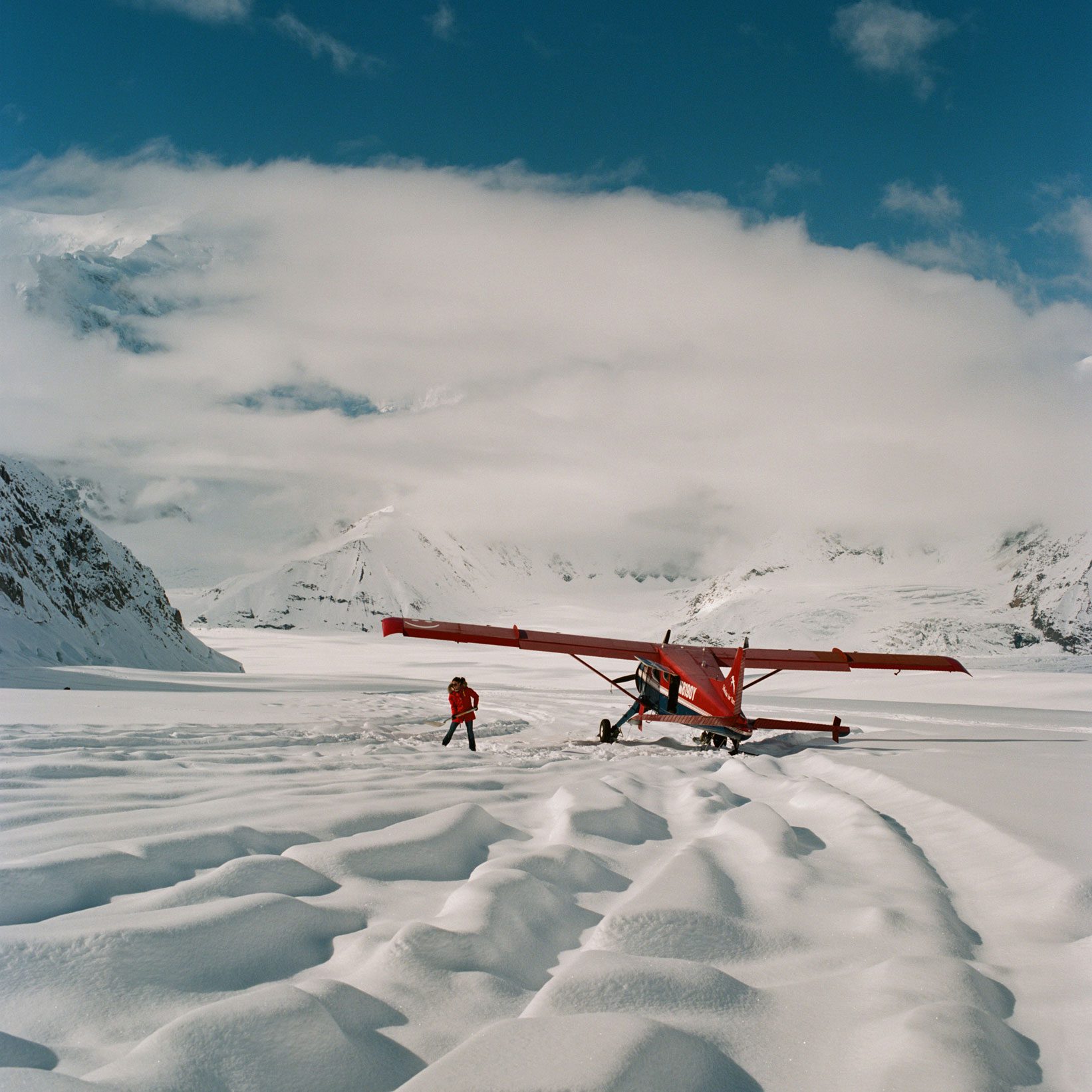I took this picture the second time I visited Etosha National Park in Namibia. I was with my partner, who hadn’t been before, and explained that since the park is vast [8,600 square miles] it’s necessary to be patient to get sightings of the larger animals.
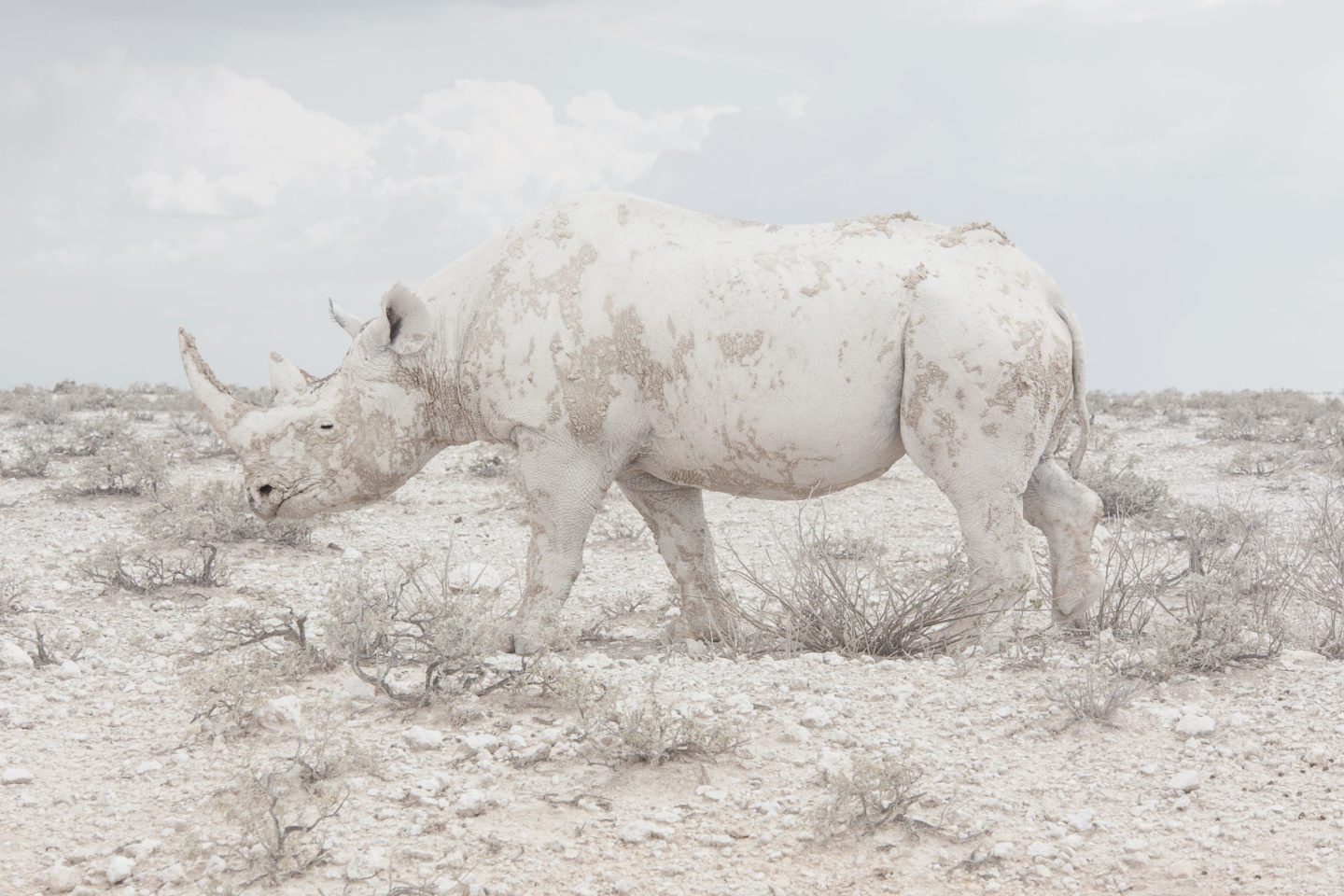
Land of Nothingness by Maroesjka Lavigne.
So we arrived prepared for a long wait. Yet almost immediately we saw this rhino. I needed to organise myself quickly to grab the opportunity. It was amazing because the rhino was still covered in mud and the weather had just changed so it was in a hurry to find shelter before the storm. Even now I find it hard to believe it happened.
Maroesjka Lavigne is a photographer based in Ghent, Belgium.
